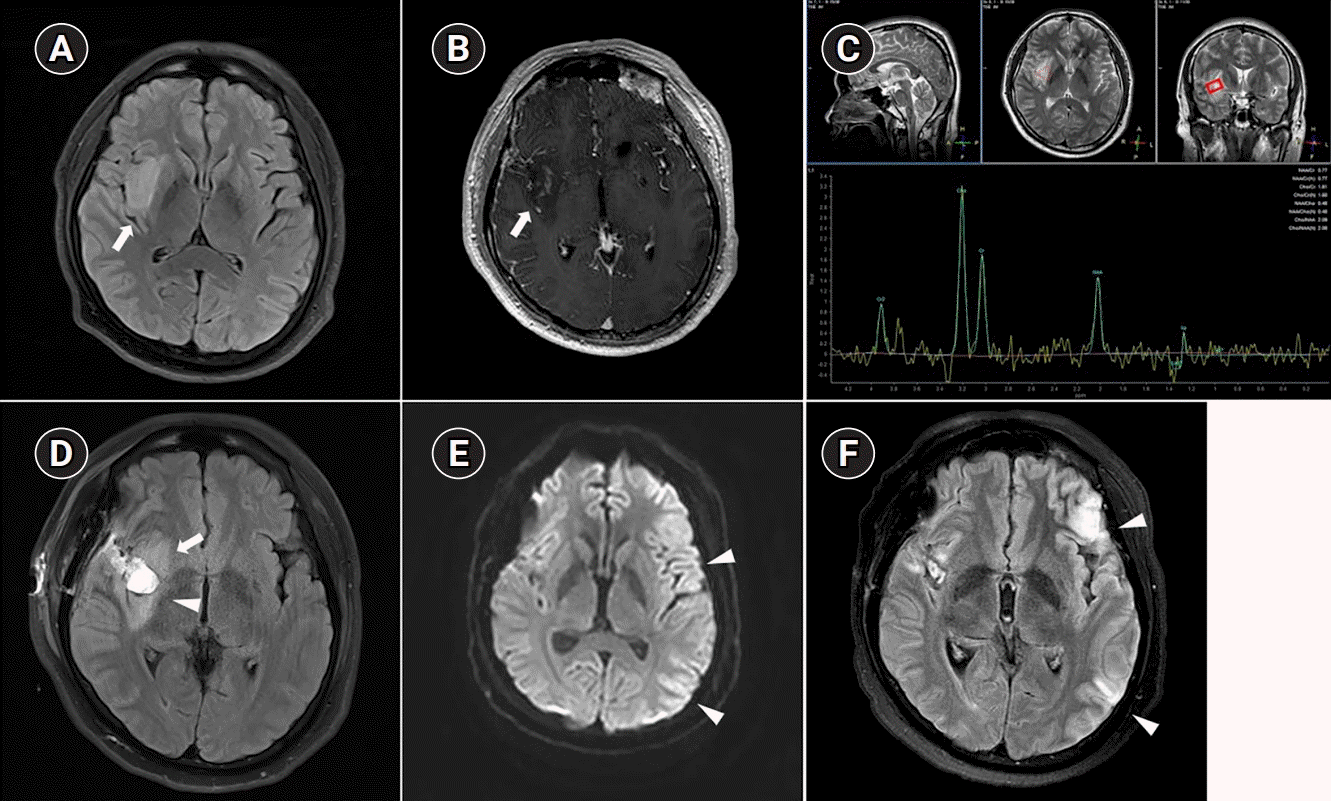Anti-N-methyl-D-aspartate receptor (NMDAR) encephalitis is the most common type of autoimmune encephalitis associated with underlying neoplasms, mainly ovarian tumors [1]. The association between NMDAR encephalitis and brain neoplasm is very rarely reported. We report a case of NMDAR encephalitis which manifested as seizures after surgery for cerebral astrocytoma.
A 34-year-old man presented with generalized tonic seizures. Brain magnetic resonance imaging (MRI) showed a mass lesion with enhancement in the right insula (Fig. 1A and B) and a mass lesion in the temporal lobe. MR spectroscopy showed increased choline to creatine ratio and decreased N-acetylaspartate peak at right basal ganglia, suggesting a neoplastic lesion (Fig. 1C). A biopsy revealed a diffuse astrocytoma. Three months later, seizures and aphasia suddenly occurred, and a brain MRI showed that, compared to postoperative images (Fig. 1D), a new parietotemporal lesion had appeared in the left hemisphere (Fig. 1E and F). Anti-NMDAR antibodies were found in the blood and cerebrospinal fluid using the cell-based immunochemistry method and indirect fluorescence assay. High-dose intravenous steroids and anti-epileptic drugs were administered, and the patient is slowly recovering from the symptoms.
Paraneoplastic NMDAR encephalitis occurring after tumor removal is very rare, and it can be difficult to distinguish between NMDAR encephalitis and tumor infiltration or metastatic lesions [2,3]. It becomes even more difficult in cases with scatted cortical lesions, which was an unusual finding of our case. This case diagnosed NMDAR encephalitis through identification of anti-NMDAR antibodies in a patient with epileptic seizures and encephalitis after surgery.




